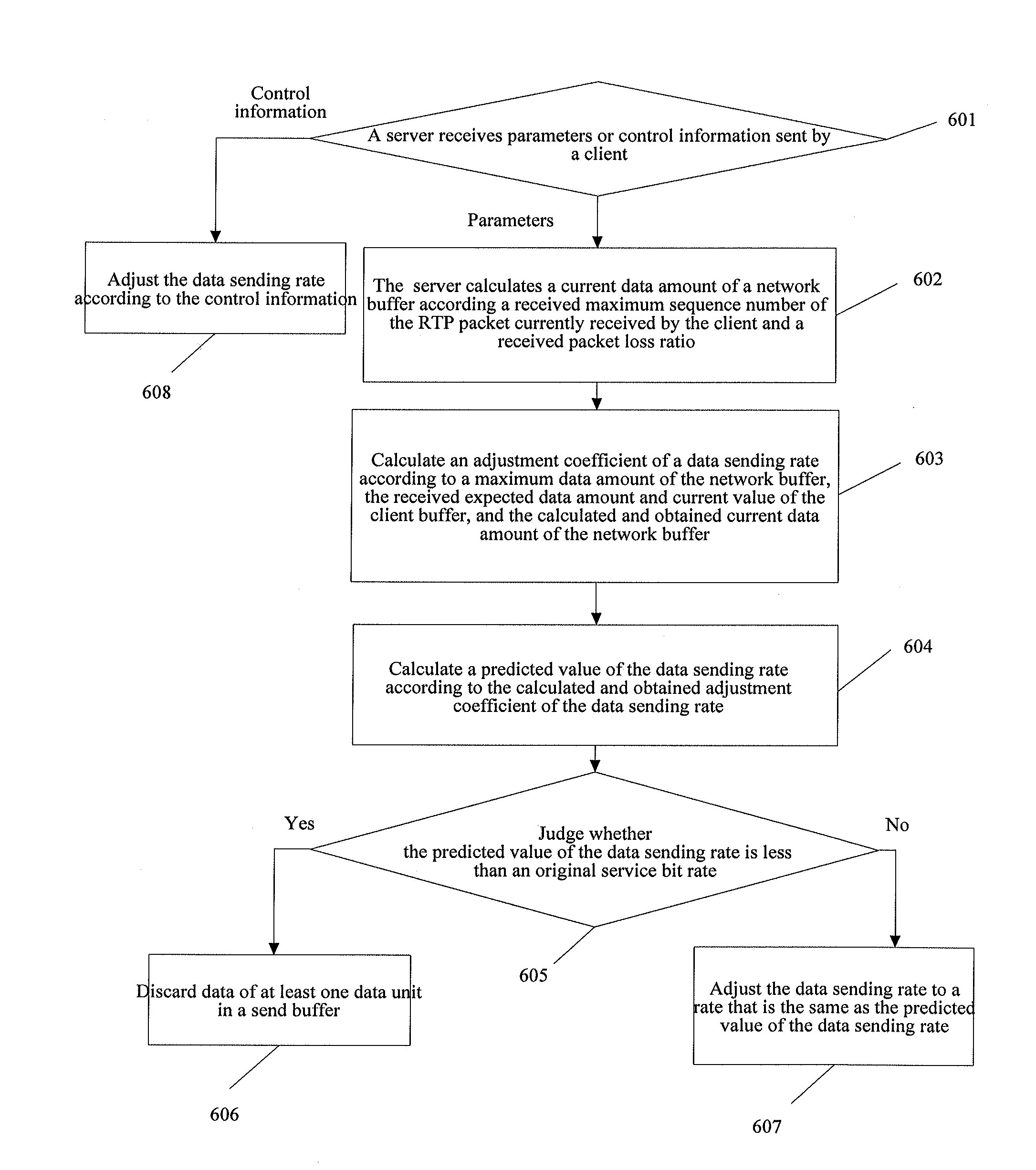Method, device, and system for self-adaptively adjusting data transmission rate
- Summary
- Abstract
- Description
- Claims
- Application Information
AI Technical Summary
Benefits of technology
Problems solved by technology
Method used
Image
Examples
embodiment 1
[0035]A method for self-adaptively adjusting a data transmission rate is provided in an embodiment of the present invention. As shown in FIG. 1, the method includes:
[0036]101: A server receives parameters sent by a client, where the parameters include: a data transmission rate currently received by the client, a maximum sequence number of a Real-time Transfer Protocol (RTP) packet currently received by the client, and a packet loss ratio; or an expected value of a client buffer, a current value of the client buffer, a packet loss ratio, and a maximum sequence number of an RTP packet currently received by the client.
[0037]102: After receiving the parameters sent by the client, calculate a predicted value of a data sending rate according to a maximum value of the network buffer and the received parameters.
[0038]The calculation of the predicted value of the data sending rate according to the maximum value of the network buffer and the received parameters is performed by using different...
embodiment 2
[0056]A method for self-adaptively adjusting a data transmission rate is provided in the embodiment of the present invention. As shown in FIG. 6, the method includes:
[0057]601: A server receives parameters or control information sent by a client; if the server receives the parameters sent by the client, perform step 602; and if the server receives the control information sent by the client, perform step 608.
[0058]The parameters include: a data transmission rate currently received by the client, a maximum sequence number of an RTP packet currently received by the client, and a packet loss ratio; or an expected value of a client buffer, a current value of the client buffer, a packet loss ratio, and a maximum sequence number of an RTP packet currently received by the client.
[0059]In the embodiment of the present invention, the received parameters including the expected value of the client buffer, the current value of the client buffer, the packet loss ratio, and the maximum sequence nu...
PUM
 Login to View More
Login to View More Abstract
Description
Claims
Application Information
 Login to View More
Login to View More - R&D
- Intellectual Property
- Life Sciences
- Materials
- Tech Scout
- Unparalleled Data Quality
- Higher Quality Content
- 60% Fewer Hallucinations
Browse by: Latest US Patents, China's latest patents, Technical Efficacy Thesaurus, Application Domain, Technology Topic, Popular Technical Reports.
© 2025 PatSnap. All rights reserved.Legal|Privacy policy|Modern Slavery Act Transparency Statement|Sitemap|About US| Contact US: help@patsnap.com



